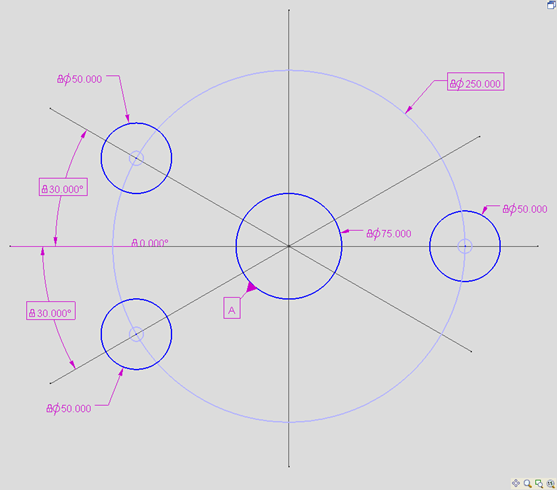Working with centerlines
In Enventive Concept, lines and centerlines are two distinctly different types of geometry:
|
Line |
Centerline |
|---|---|
|
Has two endpoints. |
Passes through a single point and is considered to be infinite in length. |
|
Has 4 DOF: 2 for the location of each point. |
Has 3 DOF: 2 for the location of the point, and 1 for the orientation of the line. |
|
The endpoints of a line should be fully constrained. |
The endpoints of a centerline should not be constrained to other objects. |
The Envelope Rule does not apply to centerlines, because centerlines are assumed to be infinite in length. (As described in the example in Line-to-Line Dimensions and the Envelope Rule, when a line-to-line dimension is used to specify a size tolerance, a long line cannot tilt as much as a short line within the specified tolerance zone. Therefore, it follows that an infinitely long line cannot tilt at all.) Centerlines cannot be used on the non-origin (arrow) side of line-to-line dimensions, because there is no valid way to apply the parallelism constraint implied by the Envelope Rule.
As a rule of thumb, if you want to use a line-to-line dimension to control the position and orientation of a physical feature (the feature has a finite length), it’s usually more appropriate to use a line segment to represent that feature rather than a centerline. This rule is also true for Parallel, Perpendicular, and Collinear tolerances, because those types of zone tolerances should never be applied to centerlines in Enventive Concept.
There are many good ways to use centerlines in your models. Centerlines are often appropriate as datums. They may be also used to identify theoretical locations for other features. For example, the figure below demonstrates the use of centerlines to establish a polar coordinate system.


